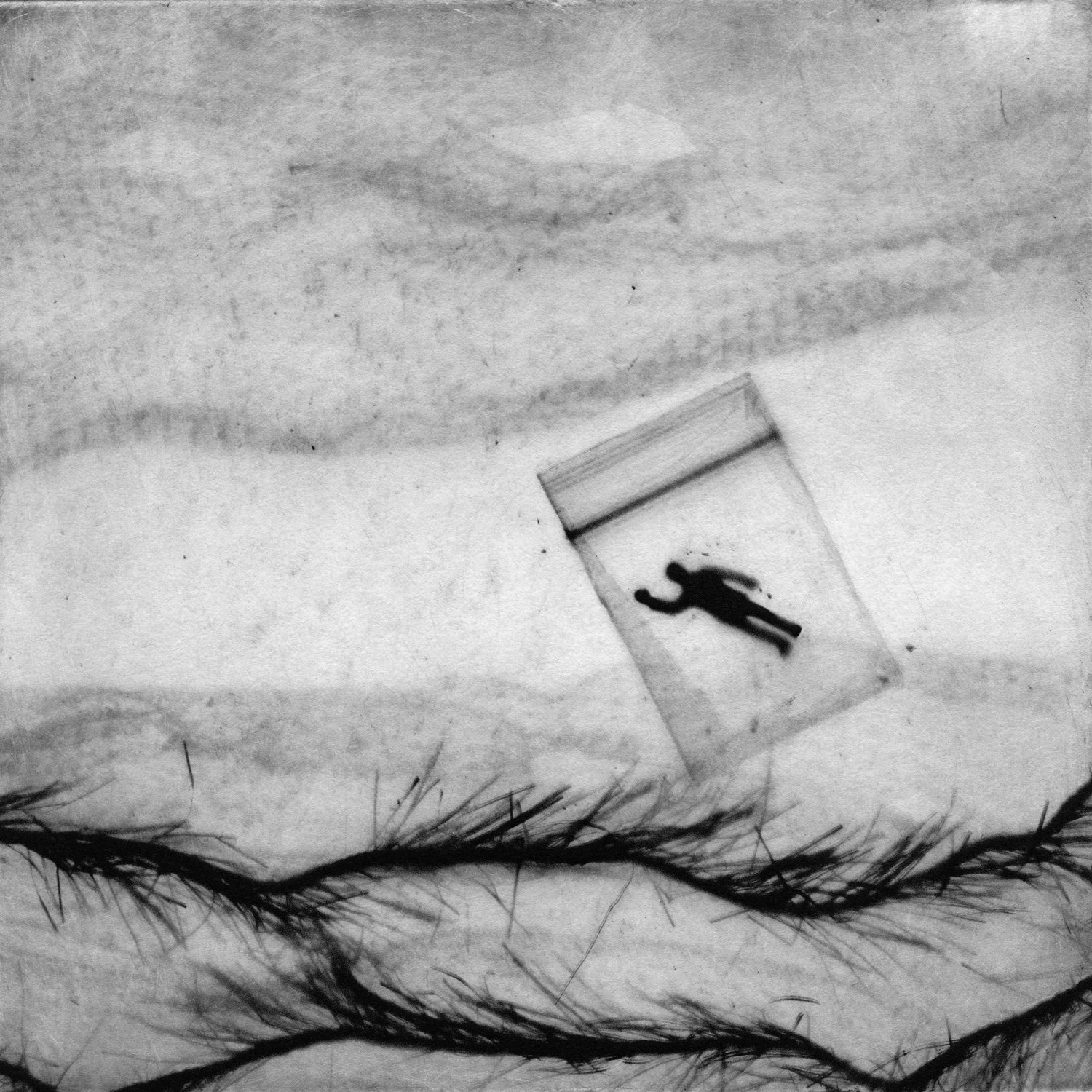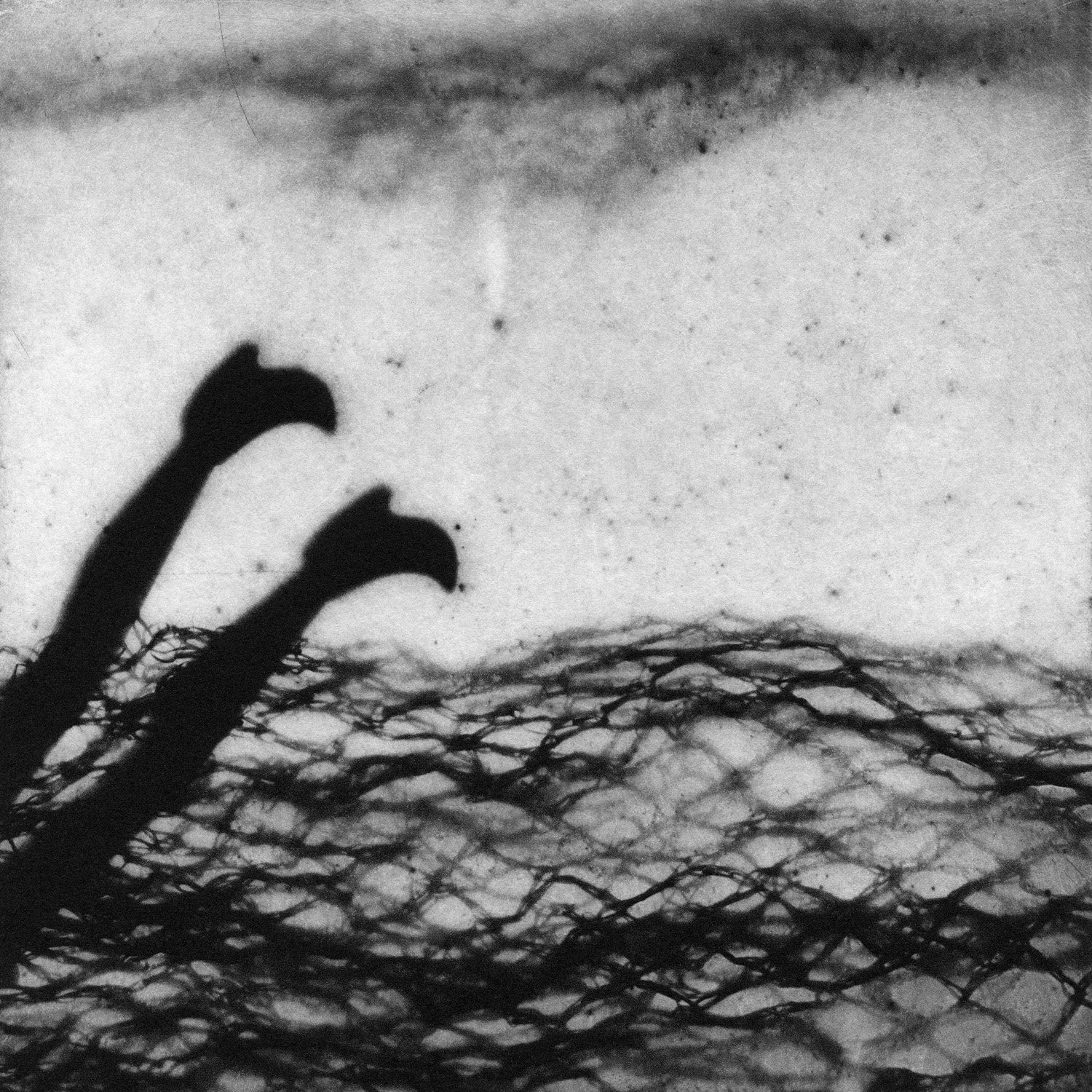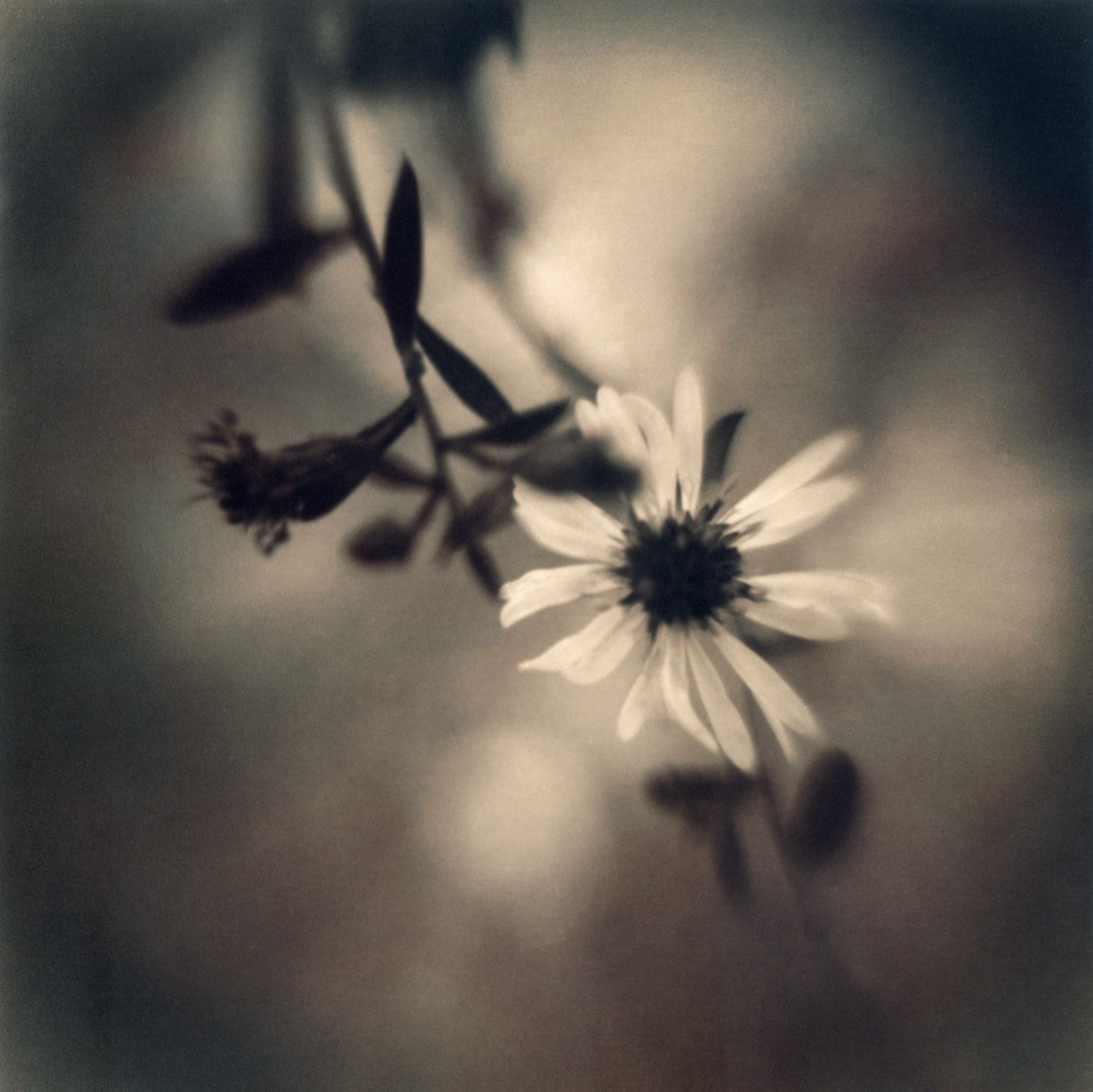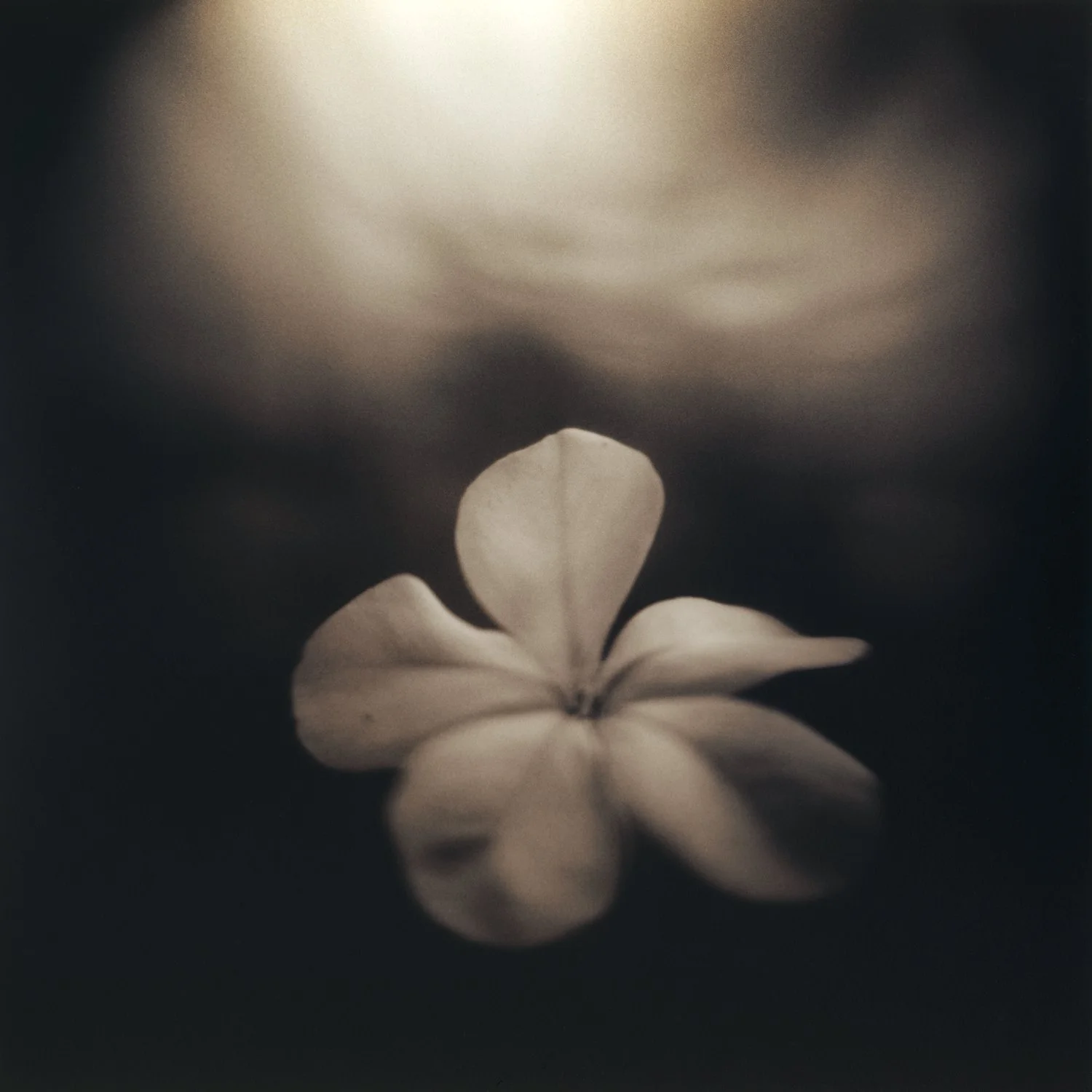Interview: Jennifer Shaw - It's Personal
“We left in the dark of night” from the series Hurricane Story
Fine art photographer, educator, and creative director, Jennifer Shaw’s imagery is both an observation and a construction of her surrounding world, often based upon personal events. Growing up in Milwaukee, Wisconsin, she earned her BFA in photography at the Rhode Island School of Design. Shortly thereafter, she relocated to New Orleans, Louisiana to begin her career as a photography instructor at the Louise S. McGhee School, while simultaneously serving as the creative director for the annual PhotoNOLA Festival. Her photographs have been published in periodicals such as B&W, American Photo, Oxford American, and others, while also appearing in online venues Lenscratch, Fraction Magazine, and NPR. To date, she has released two books, Hurricane Story and Nature/Nurture. A constant supporter of the photographic arts, her status in the community, as well as her duties with PhotoNOLA has resulted in her admiration and elevated status within the fine art realm.
Jennifer’s photographic bodies of work are most often the result of using toy cameras and film, resulting in a distinct and intimate view of her world. Jennifer says, “These simple plastic devices lend a whimsical spontaneity to the act of photographing. Although they offer little control in making exposures, their quirks can sometimes result in magic.” Indeed, it is her work, Nature/Nurture, that finds serendipity present in these nearly macro image of objects and life found in nature. With a modified plastic camera, Jennifer is able to move in and capture these tiny scenes to the point of becoming nearly abstract. In 2012, her book, Nature/Nurture, was released via North Light Press.
Shaw’s other two collections that we are showing here are deeply personal in how they connect her life to water. Living in New Orleans in 2005 when Hurricane Katrina struck the city, while also being nine months pregnant, the juxtaposition of tragedy and blessing were at a heightened state. Escaping the storm in the early hours of the morning and heading out of state, Jennifer’s first son was born only the next day, as the city she and her husband called home was devastated. Photographing toys and miniatures, Jennifer recreates these events and the two month long/6000 mile nomadic journey that took place before returning to the city she loved. Hurricane Story became the body of work resulting from these experiences and was Jennifer’s first book, released through Chin Music Press in 2011.
Lastly, Jennifer’s work in Flood State, again tells a tale of water as it relates to vast flooding that occurred throughout Louisiana in 2016. These images illuminate and emphasize her feelings while representing the precarious position of living on coastal land under the threat of rising sea levels. With adaptation comes hope, and can clearly be found throughout this collection of black and white photographs. Making a change in printing direction from previous gelatin silver prints, the illustrative quality of these depictions are lovingly recreated at photogravure prints.
In addition to her work as an educator and photographer, Jennifer’s efforts as the tireless director of the annual PhotoNOLA Festival, created by the New Orleans Photo Alliance, seeks to benefit both emerging and mid career photographic artists. Each year, a series of exhibitions, artist talks, workshops, and portfolio reviews are produced with her guidance. Typically, the events run mid December, with events announced early September. Under her navigation, this Festival and its events have quickly become favorites within the fine art photographic community.
In order to fully grasp the kind of dedication and effort it takes to accomplish and excel in all of these positions, Analog Forever Magazine is pleased to present to you this interview with Jennifer Shaw, conducted by our Editor in Chief, Michael Kirchoff. We wish to thank Jennifer for the generous time she has allowed us in bringing our readership her work and her words. Connect with Jennifer on her Website and Instagram!
Interview
Michael Kirchoff: Thank you for taking the time to share your journey and experience here with us at Analog Forever Magazine, Jennifer. Perhaps some background on what set you on the path of image making to start things off. How did photography come into your life?
Jennifer Shaw: Thank you, Michael! I took my first darkroom class the summer I was fifteen, and was immediately hooked. I had been a prolific snap shooter from a young age, and was fortunate to have a parents who encouraged my pursuits. My father bought me an old Minolta 35mm and taught me to use it, then found a summer class to enroll me in at the Milwaukee Institute of Art and Design. From there I joined a community darkroom at UWM, and went on to pursue a BFA at RISD.
MK: Who or what were your key sources of inspiration? Do you feel that they are the ones to drive you towards the aesthetic you have developed for yourself when it comes to making photographs?
JS: My first two photo books were Diane Arbus and Josef Koudelka, gifted by an aunt with very good taste. In college I fell in love with Francesca Woodman, Pierre et Gilles, and vintage comic books. After moving to New Orleans I learned about southern photographers like Keith Carter and Jack Spencer. I think traces of all these influences can be found in my work to varying degrees. I'm also inspired by music and literature, being a huge fan of short stories and narrative singer-songwriters.
MK: The majority of your work has been made using toy cameras as the device of choice. However, your images have a particular intimacy and familiarity with your subjects that is often not seen with cameras of this type. How has this relationship with toy cameras been nurtured over time? Are they something you feel will always be an extension of your vision?
JS: I started my plastic camera journey in 1999 with a Holga, then learned how to modify it with a magnifying lens because I wanted to photograph tiny things. Perhaps the intimacy you mention has something to do with the fact than I'm 2” away from my subjects when using that macro Holga. I later picked up a Diana at the suggestion of Michelle Bates (author of Toying with Creativity). It's lens offers a slightly tighter perspective than the traditional Holga. I think plastic cameras will always be there for me when one seems the best tool for what I want to express at that moment. But I will confess that I am now taking more pictures on a cell phone, which I view as the contemporary version of the plastic camera.
MK: On the technical side of this work and process, are there particular types of toy cameras, film, processing, etc., that you reach for first?
JS: These days I grab my macro Holga when I want to hone in on small things, and the Diana's (and clones) to capture wider views. My favorite films are Portra NC for color, Ilford HP5 for b&w; 400 speed usually, because it has more forgiveness for the plastic camera's limitations.
“The dogs enjoyed their vacation” from the series Hurricane Story
“Jobs were offered and declined” from the series Hurricane Story
MK: I know you’ve probably addressed this before, but I think that it’s a key element to your process of creating. How have the dramatic effects of tragedy seeped their way into so much of your work? Is there any kind of release you feel from completing a body of work like Flood State or Hurricane Story?
JS: Absolutely! Creating keeps me sane. When I'm anxious about life events I find it hugely cathartic to channel that energy into art making. Doing so brings me back into balance.
MK: As a body of work (and a book), Hurricane Story has most certainly had a lasting impact in terms of exhibitions over the years. Clearly this is a product of not simply re-staging the events that transpired, but of an ongoing interpreting of changes in weather and climate that are often at the top of many conversations in today’s world. Do you see yourself continuing to illustrate these types of themes in the future, and was that a part of your earliest intention?
JS: The impetus behind Hurricane Story was really about processing all we had gone though on a personal level during Hurricane Katrina. Of course I was aware of larger climate concerns, and their effect in creating bigger and deadlier hurricanes, but it wasn't the driving force behind that particular series. My current project, Flood State, is much more in line with wider climate issues. It also comes from a very personal perspective, but one that happens to be situated on the front lines of climate change.
MK: I notice that you are also working with the photogravure process. Why this change for your body of work, Flood State?
JS: That was an unexpected, serendipitous change, brought about by newfound access to printmaking facilities. In 2016, Josephine Sacabo hired me to print photogravures for her, and offered me use of her studio to do my own work. At first I thought, “Digital negatives? No way!” but after a few months I became curious about how the gravure plates might work as photograms, and started experimenting in my own time. Soon after, Louisiana suffered its second major rain-driven flood within the year, and I became obsessed with working my fears out visually, in the form of photogram photogravures.
MK: Can you give us a little insight into the photogravure process and why it seems to be such an enduring method of printmaking?
JS: I think one of the most appealing aspects of the photogravure medium is that it is completely hands on. It's a really fun process - physical, tactile, and incredibly satisfying. Clay Harmon just wrote a great book, Polymer Photogravure: A Step-by-Step Manual Highlighting Artists and Their Creative Practice, for those who'd like to learn more.
MK: What do you feel is the best way for you to grow as a photographic artist? Is collaboration a part of this growth at all?
JS: Cultivating a community of peers to share work with and get feedback from has been essential to my practice. I recommend that everyone find a tribe to bounce ideas and images off of, whether it be local friends, colleagues met at portfolio reviews, or an online community of like-minded creatives. And yes, collaboration absolutely helps one to progress. We have so much to learn from each other! I have been blessed with opportunities to collaborate with designers, publishers, my PhotoNOLA cohorts. I find that any time you allow other opinions into the fold those conversations help you strengthen and hone your own vision.
MK: I bring it up now and again, that I feel our physical environment directs a fair amount of our voice in the work we create every day. Certainly yours has informed your photography greatly in terms of responding to events. In addition though, living and working in New Orleans in general must also have a certain cultural impact on your art. What do you think?
JS: For sure! The city itself is a muse. This is fertile ground for so many reasons - the rich culture of creativity, the beauty of the architecture and surrounding landscape, the amazing mix of humanity and the resilience of those who reside here.
MK: Speaking of New Orleans, a city that I myself cannot get enough of for multiple reasons, you also have the role of Creative Director for PhotoNOLA, an annual festival of photography and portfolio review event. Please tell us a little about how that came about, and how PhotoNOLA operates, for those who are unfamiliar.
JS: A few months after we returned from Katrina, Don Marshall – who's basically a godfather of the arts in New Orleans - called together local photographers and encouraged us to form a non-profit. At a subsequent meeting, when asked what we as an organization might do, I raised my hand and suggested that New Orleans would be a great place to host a photography festival. I had attended FotoFest, and PhotoAmericas (now photolucida) and experienced the transformative power of those portfolio review events. I thought it would be wonderful to create a photography festival here, both to elevate the appreciation of photography amongst locals, and to attract visitors to help revive the post-hurricane economy.
PhotoNOLA is a volunteer-run festival, which takes place each December. There are portfolio reviews, workshops, and exhibitions throughout the city. It is organized by a passionate team who work year-round to produce the core programming. There are many free events within the four day schedule, so people can come down to enjoy talks and openings even if they haven't registered for reviews or workshops.
“In spite of it all there's no place like home” from the series Hurricane Story
MK: There is clearly a strong photographic community in the New Orleans area. How does the New Orleans Photo Alliance tie in with PhotoNOLA? Are there other events and opportunities they offer? How can others get involved?
JS: New Orleans Photo Alliance is the parent organization, and the PhotoNOLA festival is its flagship event. The Alliance presents gallery exhibitions and programming throughout the year, and offers two annual grants: the regional Michael P. Smith Grand for Documentary Photography, and the national Clarence John Laughlin Award. People can get involved by becoming members of the Alliance, volunteering during the festival, or if they're local and want to go all in, they can join the PhotoNOLA committee. We also offer an open call for exhibition proposals each year, the annual CURRENTS juried show, and other festival related exhibition opportunities when they arise.
MK: So, let’s see what we have so far…mother, photographer, and creative director. Yet still, I have to take notice that you are also an educator in your local community. What is it about teaching that makes you add it to an already busy repertoire of photographic endeavors?
JS: I teach photography part time to high school students. It's only a few mornings a week, so that schedule allows me to keep up with all my other responsibilities. I love watching students explore the medium, and always learn so much from them. Just this week as we began cyanotypes, one asked if she could fold the fabric, to which I responded, “why not”? She twisted it into a sculptural form and set it out to expose, and it worked! I was afraid it might come out a disappointing muddy mess, but it had a beautiful tie-die like result. In thirteen years that's the first time anyone has thought to manipulate the fabric itself as an experiment. Lovely! The nice thing about all the varied roles I play is that they each support and inform each other. I can share things I've learned in the studio or through PhotoNOLA with my students, and share things I've learned via teaching with the wider photo community.
MK: This question stays in line with your career as an educator, so - in speaking to future generations of photographers, do you have any words of wisdom to those setting out to make their own mark in the photographic world?
JS: Create for yourself. Don't worry about the latest trend, or make things you think will sell. It's when you're expressing yourself in an honest and true way that others will really connect with your work.
MK: What with so much you have going on in your creative life, I think that you must always be busy with one project or another. Is there anything specific coming up that we should be on the lookout for?
JS: I'm in more of a work phase right now, busy creating. I am continuing to make new images for Flood State, which will eventually be published by Luna Press. I've also started a new project early this year, playing around with ideas of dance, romance, and human interactions in a series of small photogravure silhouettes. The working title is True Romance, and at some point in the future that will be ready to share with the world.
MK: I appreciate this time and insight into your practice, Jennifer. I wish you the best of luck with your photography, teaching, and work with the fine people of the New Orleans creative community. Thank you so much!
JS: Thank you, Michael!
Gallery
ABOUT THE AUTHOR
Michael Kirchoff is a photographic artist, independent curator and juror, and advocate for the photographic arts. He has been a juror for Photolucida’s Critical Mass, and has reviewed portfolios for the Los Angeles Center of Photography’s Exposure Reviews and CENTER’s Review Santa Fe. Michael has been a contributing writer for Lenscratch, Light Leaked, and Don’t Take Pictures magazine. In addition, he spent ten years (2006-2016) on the Board of the American Photographic Artists in Los Angeles (APA/LA), producing artist lectures, as well as business and inspirational events for the community. Currently, he is also Editor-in-Chief at Analog Forever magazine, and is the Founding Editor for the online photographer interview website, Catalyst: Interviews. Previously, Michael spent over four years as Editor at BLUR magazine. Connect with Michael on his Website and Instagram!



































Ever wondered how an artist finds their personal “voice” in photography? Meet Jeffrey Sass, whose new body of work, “Internal Views,” beautifully demonstrates a transformation from straightforward documentation to layered, narrative-driven art pieces.